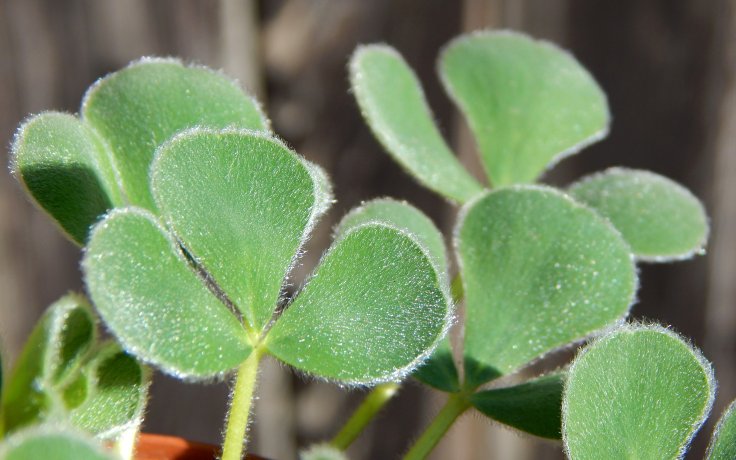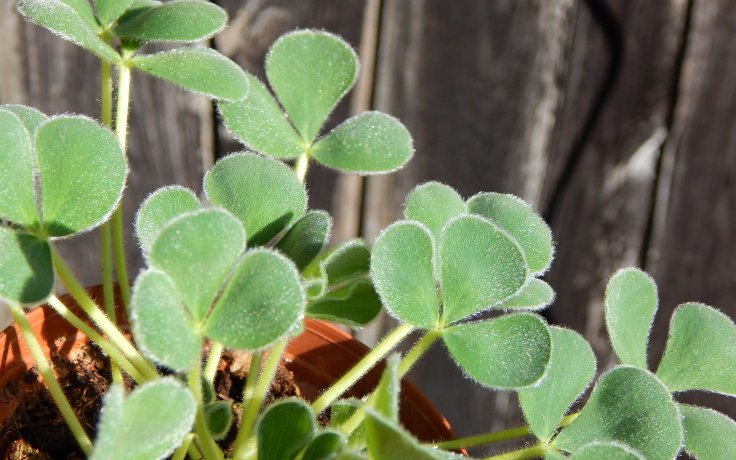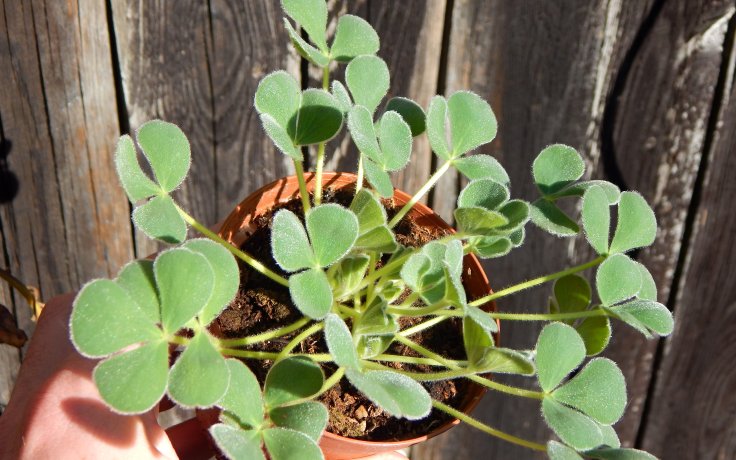- Home
- Succulents
- Oxalis
- Oxalis melanosticta





Oxalis melanosticta
Place in a sunny position. Plenty of light is needed especially during the winter.
Water only during the growing season.
The plant is not hardy.
It survives the summer as a tuber without leaves. It usually wakes up to life in September.
Oxalis melanosticta is also called black-spotted wood sorrel. It can also be found under the name Acetosella melanosticta. This tuberous perennial grows in the wild on rocky slopes in the Cape at altitudes of 500 - 600 m above sea level.
Oxalis typical trifoliate leaves are covered with fine silver hairs that shimmer in the light. The leaves do not droop down much, but rather remain spread wide, distinguishing them from their American relatives, for example. Overall, the plant grows to 10 cm.
With enough warmth and sunlight, a beautiful flower opens. It turns bright shades of yellow and blooms during early spring.
In summer the leaves dry up and the plant survives as tubers. It then often wakes up during September. The tubers start to sprout roots and sprout a stem. When it reaches above the substrate, small leaves appear on it, which later grow to full size within a few days. The moment the succulent receives that great heat, it again lets its leaves dry and survives the season in tuber form. This is not watered until the next leaves appear. However, if we want to speed up this process slightly, we can water the plant slightly early and start its cycle artificially. Care must be taken, however, as the watered tuber may rot. This piece is exceptional because it comes from Africa. Most members of the Oxalis genus have their roots in America. It is therefore quite a prized collector's piece.